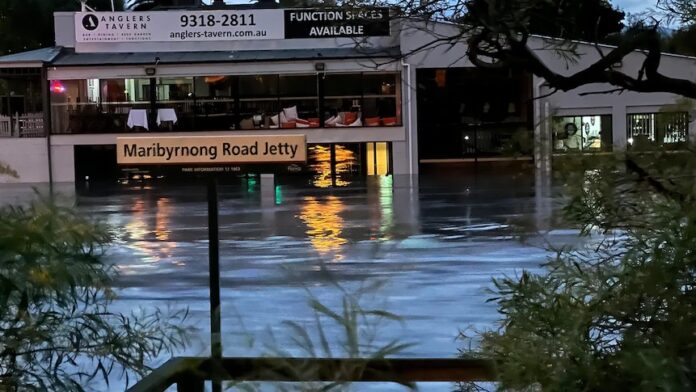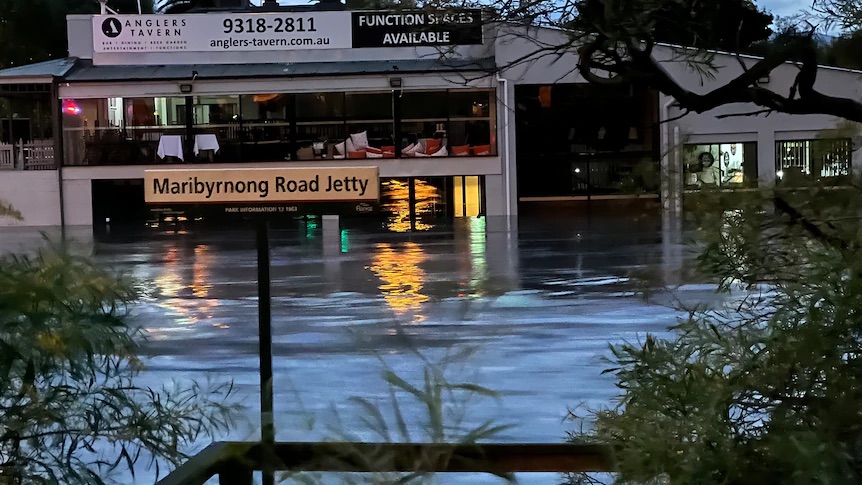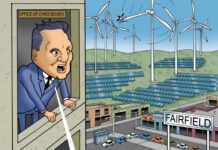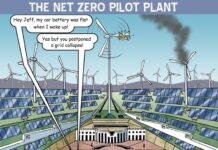Viv Forbes
There is nothing unusual about today’s floods, fires, droughts, homelessness and hunger – they have always been part of the human story. But satellite technology allows us to track them better and our world-wide media revels in disaster-reporting, bringing tearfully tragic scenes into every living room, every night.
Population growth means that more people are affected by weather extremes, but there is no evidence that floods and droughts are getting worse.
Written flood records go back to biblical times and geological records go back for epochs. Every flood plain today is testament to previous floods. The width of today’s flood plains and the depth of their alluvial soils show that there have been really huge floods in times past – and almost every society has stories of great floods.
Droughts (and the starvation they often cause) are also written into our history of famines, wars and migrations. They are also recorded in massive deposits of barren wind-blown sandstone and loess. Much of Earth’s surface has been smothered by desert sands or vast ice sheets in times past.
El Nino droughts have been recognised as far back as 1525 but the famines of 1877-78 changed history in China and India where people starved, granaries were looted, dynasties fell, cannibalism became common and people ate roots, bark and carrion.
The first Europeans to explore Australia recorded smoke from hundreds of small bush-fires, and noted the beautiful grasslands and open forests created by earlier fires. Observant ones also noted with awe the nests of flood rubbish caught high up in big gum trees.
The 1812 -1820 El Nino droughts caused wars and migrations in Africa and the 1844/46 El Nino drought changed the history of Australia. Gregory Blaxland found a way across the Blue Mountains to discover the vast inland grasslands while Charles Sturt suffered incredible hardships looking for “The Inland Sea” in central Australia during a drought.
Australia was later scarred by the Federation drought and the Millennium drought (both El Ninos).
The 1852 flood in the Murrumbidgee River swept away the town of Gundagai and the 1893 La Nina Bremer River Flood destroyed the Victoria Bridge and the Indooroopilly Bridge. At least 60 people were killed when a flash flood destroyed the township of Clermont in 1916. That whole town was relocated.
2022 is another La Nina year so we could expect big floods in Australia. These massive weather cycles are possibly generated by pools of warm oceanic water (driven by sub-sea volcanism.) When the warm pools are in the western Pacific, they generate floods for Australia and droughts in the Americas. When they are near Peru, Australia can expect droughts. Similar weather cycles operate in the Indian Ocean.
The best practical way to cope with the future floods and droughts is to build more dams, or raise dam walls. But Australia is not doing this – ALP/Green governments are ensuring even worse outcomes by damaging food and electricity production with ever more Net Zero nonsense; by increasing rain runoff with more pavements, roads and solar panels; and they have wasted billions on Flannery desalination plants.
Governments should also stop protecting people from the inevitable results of their own choices on where to locate their homes and businesses. Every site faces some risk whether from flood, drought, cyclone, hurricane, bushfire, earthquake, volcano or tidal wave. Owners are best placed to assess these risks and must accept the cost of their choices.
This year’s Australian floods show that very many people have chosen to live on flood plains near picturesque creeks and rivers – many of our towns and cities are located there. In those areas councils should paint flood marks on power poles and sellers should be obliged to reveal what they know about the flood history of that property. And councils must not approve new developments that increase flood risks for others.
But flood-plain dwellers and their insurers (not tax payers) should bear the costs of occasional floods or droughts. If you like the river views and fertile alluvial soils, you must accept the full cost and inconvenience of the occasional flood.
The natural weather cycles between floods and famines will continue. Every generation leaves a legacy for its descendants – our ancestors bequeathed us stored water and productive farmland. Today’s green religion demonises dams and farmers so our descendants will suffer more than we suffer now. Pinched bellies are worse than wet feet.
Prudent people would build more dams to moderate the La Nina floods and to provide insurance against the inevitable El Nino droughts. This generation is not building dams – in fact, right now, officials are RELEASING stored water from dams. They will be cursed by some future generation.
Further Reading:
Ross Couper-Johnston, 2000,
“El Nino – the Weather Phenomenon that Changed the World”.
Coronet Books, Hodder & Stoughton, London.
Many Fatalities in 1916 Clermont flood:
Global Warming? Under Sea Volcanoes – the Axial Seamount – Thousands more like it:
https://saltbushclub.com/wp-content/uploads/2022/07/axial-sea-mount.pdf
Professor Wyss Yim, Autumn 2013, Imperial Engineer:
Climatic impacts of the October 2011 to March 2012 El Hierro submarine volcanic eruption.
More failed Forecasts:
Viv and Judy Forbes have spent a lifetime coping with floods and droughts on several pastoral and exploration properties in Queensland and Northern Territory. Viv mapped the geology around the Nathan Gorge dam site near Theodore in 1964, 58 years ago. That dam has still not been built.
Originally published at Richardson Post.











